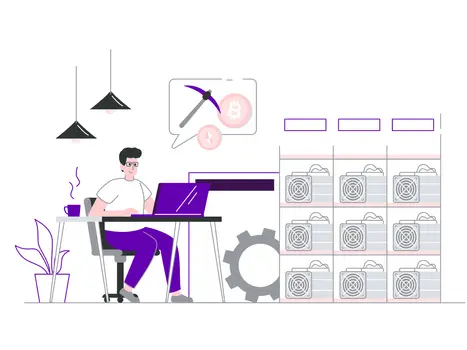What is a CBDC?
CBDC is a digital currency type with great potential to facilitate a country's financial system. Many countries are developing its own CBDC. Find out how this can change things!

A CBDC is a digital currency issued by the Central Bank, functioning as the digital version of a country's fiat currency. CBDC stands for Central Bank Digital Currency and has garnered significant interest in the financial sector.
Traditionally, central banks issue money through physical banknotes and coins, essentially printing money. However, a CBDC is issued digitally using blockchain technology (the same technology behind cryptocurrencies), enabling the circulation of currency that hasn't been physically printed. Learn here how blockchain works!
What are the types of CBDCs?
A CBDC can be created in two forms: wholesale and retail. The wholesale CBDC covers only commercial banks and clearinghouses for transactions between financial institutions. This is essential for enhancing the efficiency of payments between national or international organizations. Essentially, this version only circulates institutionally.
On the other hand, the retail CBDC is linked to the end consumer, providing an alternative to physical money for citizens. This promotes financial inclusion as it enables digital transactions for people without bank accounts. In this case, a digital wallet containing the digital currency facilitates the transaction.
What is fiat currency?
Fiat currency is used for commercial and financial transactions and is regulated by the government or the issuing authority. Examples of fiat currencies include the US dollar, the Japanese yen, the Euro (European Union), among others. CBDCs are also a regulated form by each nation's central bank but in digital format, solely functioning in the digital realm.
Is CBDC a cryptocurrency?
The answer is no. Central Bank Digital Currency is a virtual currency issued by the central bank, an institution responsible for regulating a country's financial system. In the case of cryptocurrencies like Bitcoin, issuance and distribution occur in a decentralized network without involvement from a central bank or government. Hence, the system is governed by the user community rather than an institution. Additionally, cryptocurrencies are financial assets, while CBDCs can be used for various traditional money purposes (bill payment, transfers, savings, etc.).
Is CBDC good or bad?
Central Bank Digital Currencies (CBDCs) offer potential benefits such as faster and more efficient transactions, financial inclusion for the unbanked, enhanced monetary policy tools, and reduced cash management costs. However, they also pose risks including potential financial instability due to bank runs, disintermediation of commercial banks, and the need to address technological challenges like cybersecurity and interoperability. The evaluation of whether CBDCs are good or bad hinges on balancing these advantages and drawbacks, emphasizing the importance of careful consideration and effective management of their implementation.
Which country has CBDC?
- The Bahamas
- Jamaica
- Anguilla
- Nigeria
- Saint Kitts and Nevis
- Montserrat
- Antigua and Barbuda
- Dominica
- Saint Lucia
- Saint Vincent and the Grenadines
- Grenada
These countries already launched their own CBDCs, according to atlanticcouncil.org.
If you're seeking more information about cryptocurrency investments, keep reading DGFresh!



